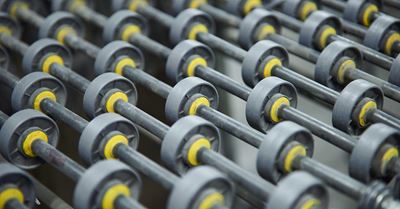Anchoring Pallet Racks

Anchoring your racks is not merely a suggestion, the Rack Manufacturers Institute (RMI) guidelines have stringent specifications on base plates, anchors and surfaces.
Why should you anchor your pallet racks? There are several reasons, but the most important one is for the safety of you and your employees. Forklift impacts, earthquakes and other unexpected incidents can cause racks to fall, which can easily result in serious injury or death to those underneath. The footplate and the anchors of pallet racks are engineered to keep frames upright in the event of such incidents.
Anchoring your racks is not merely a suggestion, the Rack Manufacturers Institute (RMI) guidelines have stringent specifications on base plates, anchors and surfaces. Non compliance with RMI guidelines can earn you a safety citation and fine from OSHA under section 1910.176(b).
In many jurisdictions there are additional building and safety codes that apply to anchoring your racks. Check your local regulations for additional requirements beyond those established by RMI.
Surface Considerations
Concrete is really the only acceptable base surface for most pallet racking installations, given the enormous weight that systems must support. Floors should be in good condition without major cracks. The surface should be level, although minor adjustments can be made for individual uprights with shims.
Footplates
Typical footplates are configured with two anchor holes. Here’s the interesting part: for most installations, you only need to use one of the two supplied holes. The second hole is a “backup” in case it’s difficult or impossible for you to sink an anchor bolt using the first one. For example, you may run into situations where the anchor is too close to an expansion joint, you hit steel rebar when drilling, or an anchor needs to be placed in the exact position of an abandoned anchor from a previous installation.
Only one anchor is required in most, but not all cases. It’s important to check the manufacturer’s specifications for your individual racking system. In some cases you may need to install extra anchors, and in others it may actually be detrimental to the integrity of your concrete surface if you install two anchors close together.
Pallet Rack Anchors
For the most part, two types of anchors are used for pallet racking: wedge anchors and strike anchors. Other types of lighter weight concrete anchors are sleeve anchors and screw anchors.
Wedge Anchors: made of carbon, galvanized, stainless, or zinc-plated steel, these are one of the most common types of anchors you’ll see in a warehouse. Made for solid concrete, they cannot be removed because they will damage your floor if you attempt to do so.
Strike Anchors: this type of anchor expands upon impact as it is hammered into the concrete. These are also very common in warehouse installations.
For both types of anchors, a hammer drill with a bit the same size of the anchor is used to drill holes anywhere between 2.75-6 inches, depending on requirements. Upon clearing the debris from drilling, the anchor is pounded into the hole and the footplate is fastened to the anchor.
Pallet Rack Installation Assistance
If you have questions about installing racking or are in need of installation services, get in touch with a racking expert at Raymond West today. We can help you with layout, specification, procurement, and installation of your racking system.

